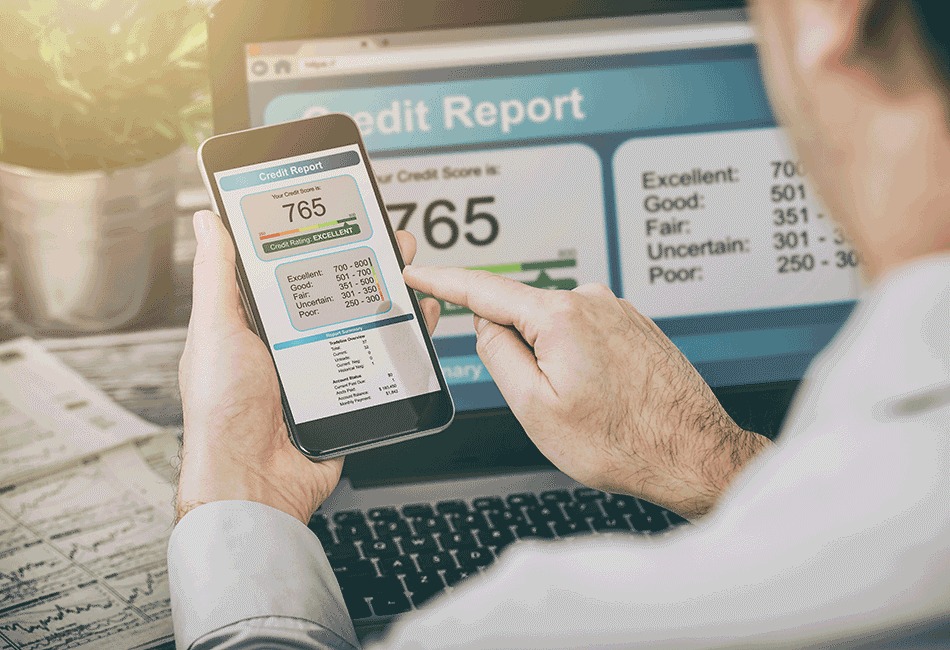Bankruptcy is a legal recourse that provides relief from the overwhelming debt you cannot repay, giving you a fresh start. However, your credit rating can substantially decrease after you file for bankruptcy, and you may see your credit score drop drastically.
Bankruptcy can stay on your credit report for a long time, leaving a negative mark on your credit rating that may make it difficult for you to get credit in the future. Here are some of the disadvantages of a low credit rating after bankruptcy:
- Lenders consider you a risky applicant
- You may get credit only at high interest rates
- You may get unfavourable lending terms and a lower loan amount
- You will be ineligible for special loans and offers
Thankfully, he effect of bankruptcy reduces over time, and you can improve your credit rating by working towards better credit behaviour. Read on to know some of the strategies that you can incorporate to boost your credit rating after bankruptcy.
Check Your Credit Score Online and Review Your Credit Report Regularly
Regularly reviewing and monitoring your credit report and credit rating is a healthy financial practice. A credit score is a 3-digit numeric summary indicating your repayment behaviour and borrowing history, which ranges between 300-900, with 750 and up being an optimal score.
Keeping a regular check on your credit rating helps you keep track of the changes in it over time. It can also help you check for any discrepancies in your credit report, which can lead to a lower credit rating.
Keep Your Credit Utilisation Rate Low
Your credit utilisation ratio is simply the proportion of the credit limit that you have used in comparison to the total credit limit available to you. It is advisable to keep this ratio low at around 30-40% to maintain a good credit rating.
A high credit utilisation ratio can have a detrimental impact on your credit score. High utilisation implies that you have a shortage of funds and need credit to meet your financial obligations. It shows that you do not have a planned approach towards your finances.
So, if you have a credit card, use only up to 35% of its limit to ensure your credit utilisation rate is low.
Pay your EMIs and Credit Card Bills on Time
To keep your credit rating at an optimal level, one of the most effective approaches is making timely payments. This refers to both paying EMIs and credit card bills.
Conversely, making late payments can decrease your credit score and increase your overall interest dues. This interest may keep increasing and piling up, especially when you do not pay your credit card bills, leading you into a debt trap.
It may be helpful to set up reminders for all your repayments, which will help notify you about the due dates. You can also sign up for an auto-debit mandate to avoid missing your payments.
Become an Authorised User or Get a Co-signer For New Credit
If you have a low credit rating after bankruptcy, becoming an authorised user is one way to get a financial advantage.
For instance, say your sibling has a good credit score and a credit card. If your sibling makes you an authorised user, you can use the card without having the primary repayment responsibility. This can help you build your credit score if you and your sibling pay the credit card bills on time.
Another way to build your credit score is to get a secured credit card. This type of credit card is secured by your fixed deposit investment and can help you get a credit card even with a low credit rating. When you use it wisely and pay bills on time, you can boost your credit score.
Another way you can avail of new credit after bankruptcy is by getting assistance from a co-signer or a guarantor. This way, the responsibility of loan repayment is split between two parties, reducing the risk for financial institutions.
Thus, your chances of getting approval on such loan applications are higher. By repaying this loan on time, you can build your credit rating anew.
Keep Your Older Credit Cards Active
Keeping your old credit cards active, transacting through them regularly and paying the bills by the due date can also help you improve your credit rating. By maintaining older credit accounts over time, you can boost your credit score with ease.
However, it is crucial to use your credit cards wisely. Remember to maintain an optimal credit utilisation ratio and swipe them based on your monthly budget.
Restrict Your Expenditures to Necessities Only
Refraining from unnecessary expenses can certainly aid in improving your credit rating after bankruptcy. If you make extravagant purchases after declaring bankruptcy, it does not give a good impression of your financial management and creditworthiness.
Avoid making purchases that you cannot afford comfortably. These risky practices can result in mismanagement of your finances. If you have surplus funds, use them towards repayment of other outstanding dues and bills. Or you can use them to save and invest for your future financial well-being.
All these efforts count towards improving your credit rating slowly and steadily. You can check credit score online to track the progress of your credit rating.
Recovering from bankruptcy and improving your credit rating requires consistent efforts and time; however, it is worth the effort. With a positive credit rating, you can work towards a stress-free financial future.



